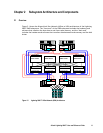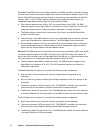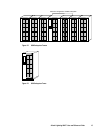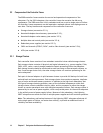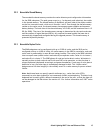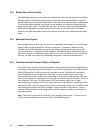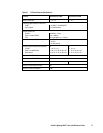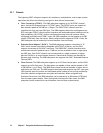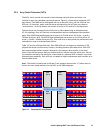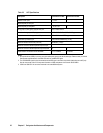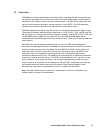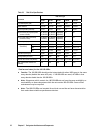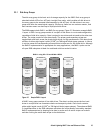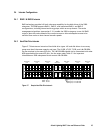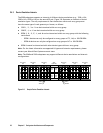
Hitachi Lightning 9900™ User and Reference Guide 19
2.2.8 Array Control Processors (ACPs)
The ACPs, which control the transfer of data between the disk drives and cache, are
installed in pairs for redundancy and performance. Figure 2.4 illustrates a conceptual ACP
pair domain. The 9960 can be configured with up to four ACP pairs, and the 9910 has one
ACP pair. All functions, paths, and disk drives controlled by one ACP pair are called an
“array domain.” An array domain can contain a variety of LVI and/or LU configurations.
The disk drives are connected to the ACP pairs by fibre cables using an arbitrated-loop
(FC-AL) topology. Each ACP has four microprocessors and four independent fibre backend
paths. Each 9960 fibre backend path can access up to 32 disk drives (32 drives × 4 paths =
128 disk drives per ACP). Each 9910 fibre backend path can access up to 12 disk drives (12
drives × 4 paths = 48 disk drives per ACP). Each disk drive is dual-ported for performance and
redundancy in case of a backend path failure.
Table 2.2 lists the ACP specifications. Each 9960 ACP pair can support a maximum of 128
physical disk drives (in three array frames), including dynamic spare disk drives. Each ACP
pair contains eight buffers (one per fibre path), that support data transfer to and from
cache. Each disk drive has a dual-port feature and can transfer data via either port. Each of
the two paths shared by the disk drive is connected to a separate ACP in the pair to provide
alternate path capability. Each ACP pair is capable of eight simultaneous data transfers to or
from the disk drives.
Note: The Hitachi CruiseControl and Graph-Track products (see section 3.7) allow users to
collect and view usage statistics for the ACPs in the 9900 subsystem.
ACP
Pair 1
ACP
Pair 2
ACP
Pair 4
ACP
Pair 3
M
M
a
a
x
x
i
i
m
m
u
u
m
m
F
F
o
o
u
u
r
r
A
A
C
C
P
P
P
P
a
a
i
i
r
r
s
s
3
3
2
2
F
F
C
C
-
-
A
A
L
L
l
l
o
o
o
o
p
p
s
s
=
=
3
3
.
.
2
2
G
G
B
B
/
/
s
s
Figure 2.4 Conceptual ACP Array Domain



